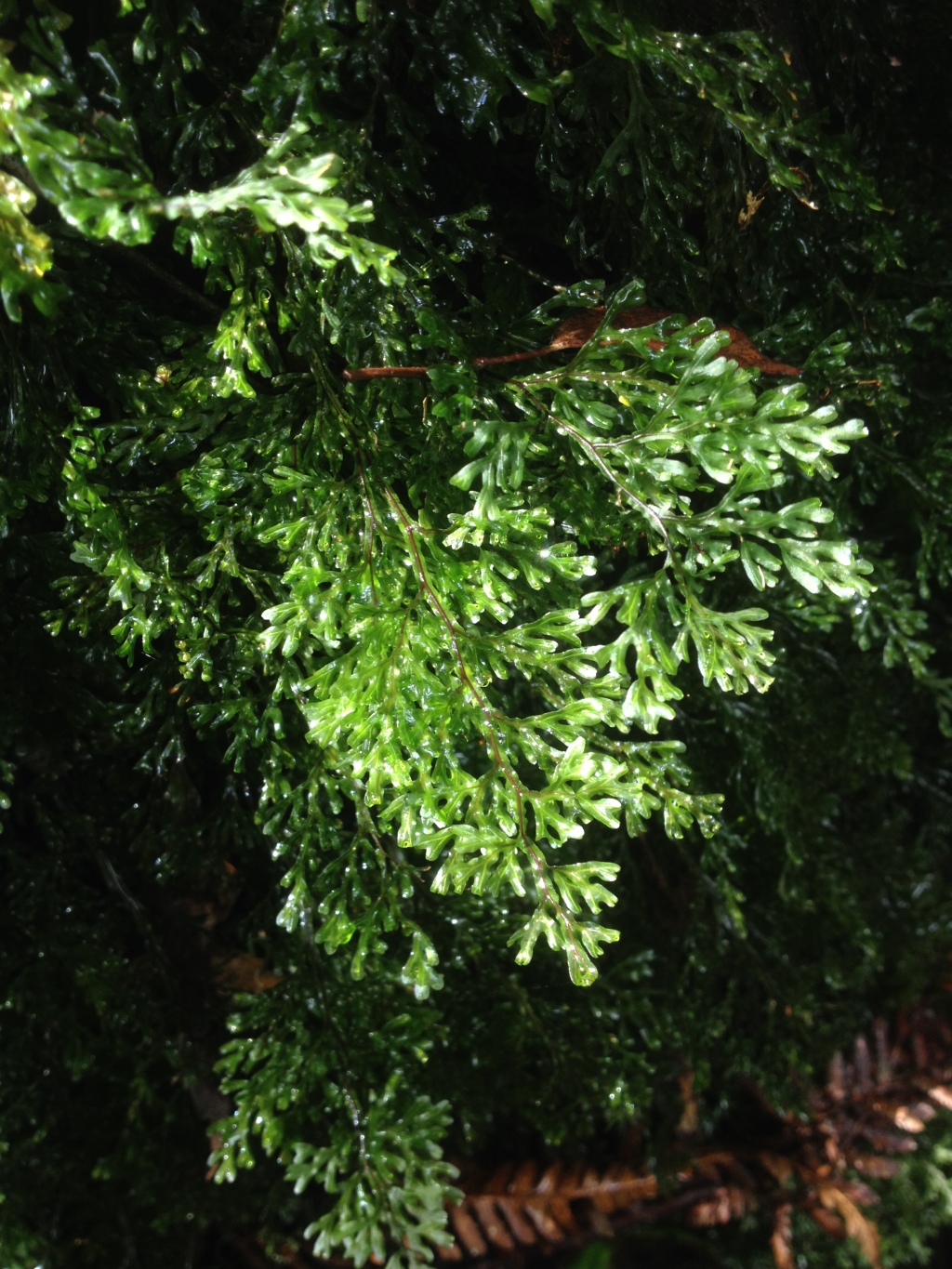Hymenophyllum australe
Willd. Austral Filmy-fernRhizome creeping, fine and wiry, with scattered hairs. Fronds distant, erect, 6–20 cm long. Stipe wiry, prominently winged; wing continuing along rachis, sometimes crinkled. Lamina 2–3-pinnate, triangular to ovate, dark green; ultimate segments short, narrowly oblong; margin entire; apex blunt, sometimes notched. Sori numerous, terminal on lateral pinnae segments, singly or in pairs, not immersed in lamina; indusium deeply 2-lipped, wider than segment, broadly oval, apical margins toothed or deeply cleft; receptacle short.
VVP, GipP, OtP, WaP, CVU, EGL, EGU, WPro, HSF, HNF, OtR, Strz, HFE, VAlp. Also Qld, NSW, Tas. (including Bass Strait islands). Growing on tree-ferns, trees, decaying logs or rocks in wet, usually montane forests. It was once found on the Mornington Peninsula, but is apparently now extinct in that area as a result of bushfires. Only one isolated occurrence of this species is known west of the Otways, near Byaduk.
New Zealand populations of Hymenophyllum australe were often segregated as H. atrovirens Col. However, there are no consistent morphological characters that distinguish Australian and New Zealand plants and their close relatedness is reinforced by similar chloroplast DNA sequences (Perrie et al. 2013). Consequently, H. atrovirens is now included within H. australe. The most morphologically similar and closely related species to H. australe is the newly described H. pluviatile Perrie & Brownsey which is endemic to New Zealand. It is distinguished from H. australe by its more divided fronds and by the ends of the primary pinnae not curving towards the apex (Perrie et al. 2013).
Entwisle, T.J. (1994). Ferns and allied plants (Psilophyta, Lycopodiophyta, Polypodiophyta). In: Walsh, N.G.; Entwisle, T.J., Flora of Victoria Vol. 2, Ferns and Allied Plants, Conifers and Monocotyledons, pp. 13–111. Inkata Press, Melbourne.
 Spinning
Spinning


